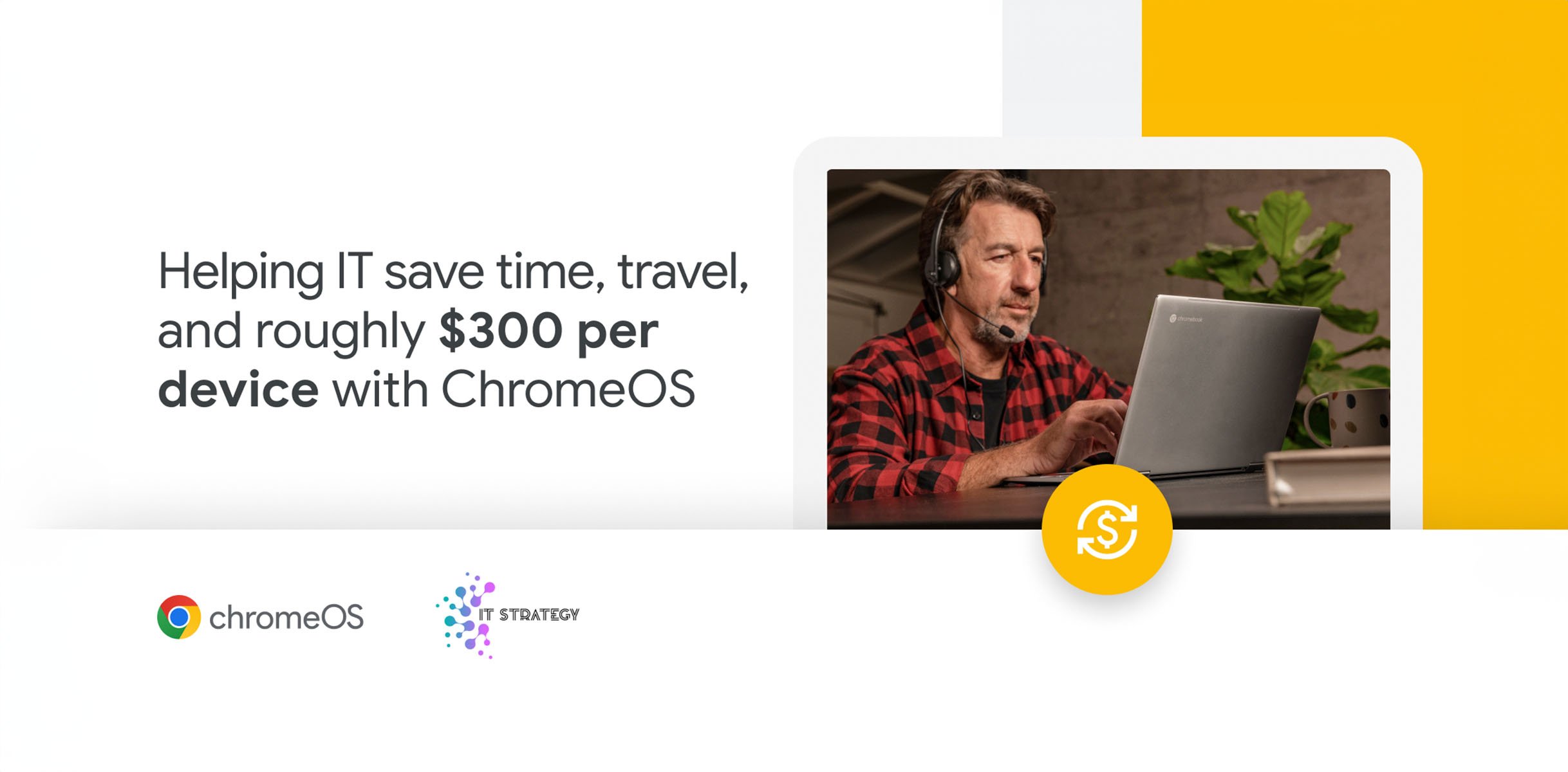Today’s post is by Carlos Ramo Rodriguez, IT Director, Leopoldo Franco, Brand Manager, and Marco Polo Escutia, General Manager Corporate Group, for IT Strategy, a Mexico City-based IT firm for major enterprises. IT Strategy chose ChromeOS devices to move its business to the cloud.
When the time came to make a change in the productivity tools at IT Strategy, we naturally turned to ChromeOS. The results of the change were significant in several ways, including cost. In an exact comparison, the total cost of ownership for ChromeOS devices, including hardware and security software, saved us 48% — about US $300 per device.
Why management became the key to security
From our headquarters in Mexico City, our field supervisors travel all over the country. The more often they traveled, the greater the security risk if a laptop was lost or stolen. We realized that we had very little control over these Windows devices because they were operating outside of our network.
In addition to security challenges, our computers were aging. We had more than 160 devices that had been in continuous operation for six years or more. The company is budget-conscious due to the economic impact of the pandemic. During the period of full-time remote work, we adopted Google Cloud Platform and Google Workspace. We had such a great experience with their integration and management abilities that we carried out a proof of concept with ChromeOS.
Switching to ChromeOS devices has reduced our total cost of ownership by 48% – about $300 per device. A huge savings that has really improved our bottom line
Keeping data and people safe within a single console
With the previous platform and devices, we couldn’t block access to or wipe lost or stolen laptops. That ability is important to us because we have access to sensitive information about our clients. We solved this problem with Lenovo Chromebooks and ChromeOS device management.
Previously we used Windows Active Directory Management, but that didn’t help when people were working remotely. With ChromeOS device management through the Google Admin console, we now have control no matter where our employees are. We can monitor the day-to-day security events and apply policies based on what we see. And if a ChromeOS device is lost or stolen, we can remotely block access keeping our data secure.
More time to invest in IT improvements
Our IT team also likes the time savings we gain with ChromeOS devices. Before ChromeOS, we had to travel across Mexico to install anti-virus software and upgrade operating systems. ChromeOS updates automatically, so we no longer have to manage system upgrades or worry about security issues. With more available time, we have transformed many technology processes.
In fact, ChromeOS has helped us reduce the time required to replace an outdated laptop from four days to just 30 minutes. That’s an incredible time savings considering we have employees located across Mexico.
ChromeOS has helped us reduce the time required to replace an outdated laptop from four days to just 30 minutes. That’s an incredible time savings considering we have employees located across Mexico.
Sharing our own ChromeOS transformation
We currently have about 200 Lenovo Chromebooks activated, and will add 70 more over the next few months. We also have 70 old Windows laptops that we converted to ChromeOS Flex — another way we made efficient use of our budget, so we didn’t need to buy 70 new laptops.
ChromeOS devices have brought real benefits to our business. Time, cost savings, and better service to our employees are just a few, and we expect to have more accomplishments to report as we add. Thanks to our positive experience, we now recommend ChromeOS devices to our customers. When we help our clients change to ChromeOS, we speak from experience.
ChromeOS Flex has helped us amortize the financial impact of the change in technology. We bought some machines on another platform which can still be functional with the use of ChromeOS Flex, in addition to obtaining all the benefits of security, monitoring and versatility that we have with the Google Cloud ecosystem.

